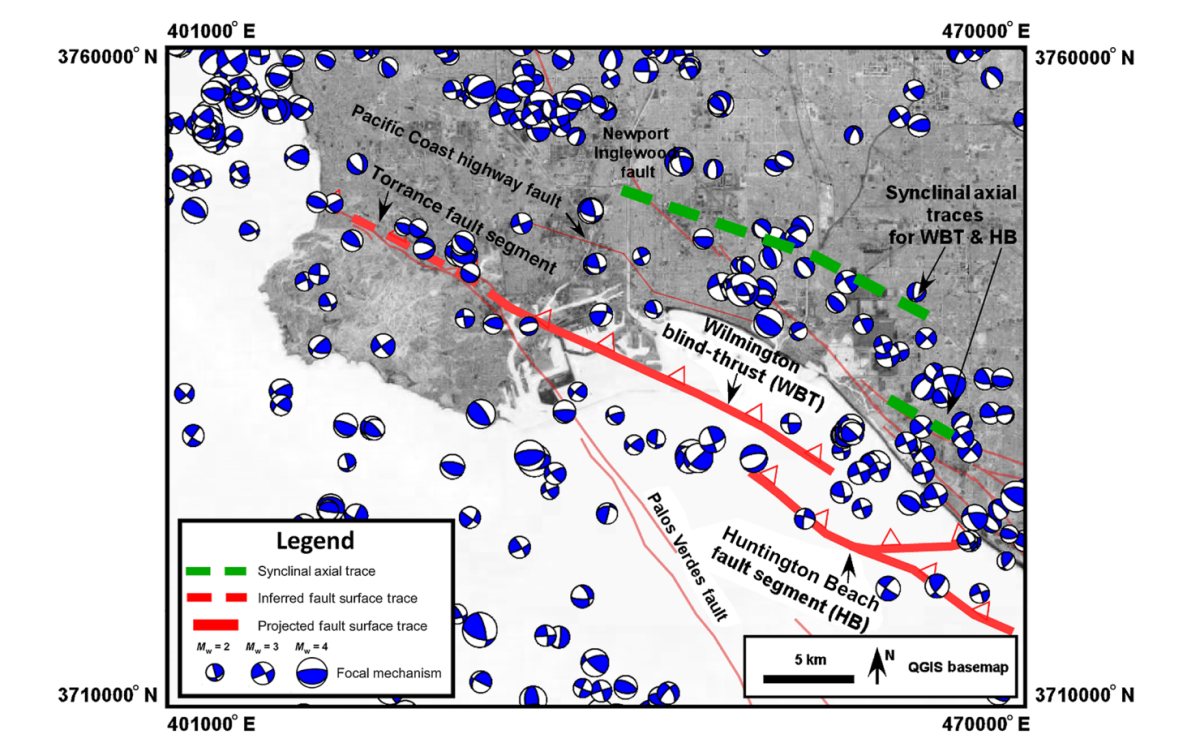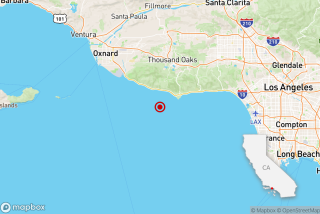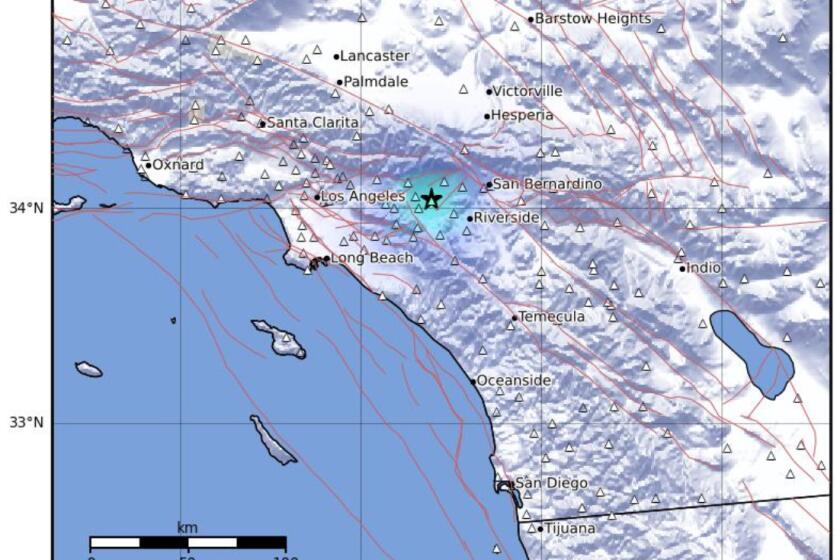Earthquake fault long thought dormant could devastate Los Angeles, researchers say
Scientists citing new research say an earthquake fault along the Los Angeles coast, previously believed to be dormant, is active and could cause a destructive 6.4 magnitude earthquake if it ruptured.
And if it linked with other faults, it could trigger an earthquake in the magnitude 7 range, according to a team of researchers from Harvard, USC and the U.S. Geological Survey.
The fault, known as the Wilmington Blind-Thrust fault, stretches for about 12.5 miles, running northwest from Huntington Beach, directly beneath the Los Angeles and Long Beach harbors, past the east side of the Palos Verdes Pensinula and out toward Santa Monica Bay.
Researchers have known for decades that the fault existed, but it was long thought to be dormant and therefore of no concern for the residents of Los Angeles.

However, a new report, led by Franklin Wolfe, a doctoral student in the structural modeling and earth resources group at Harvard, has found that the Wilmington Blind Thrust Fault is in fact alive and kicking and could affect the overlying ports of Los Angeles and Long Beach.
“It doesn’t rupture frequently, but it’s like a sleeping giant beneath the harbor, “ Wolfe said. “Just because it’s slow, doesn’t mean it’s not dangerous.”
A blind-thrust fault is so named because the fault itself doesn’t reach the surface of the Earth. There are no hills, cracks or breaks to indicate its existence.
Scientists knew the Wilmington fault was there because it sits below the Wilmington Oil Fields and data collected by the oil industry revealed folding in deep layers of rock that indicated the existence of a fault. However, the tell-tale folding of the rock did not appear to extend to more shallow layers of earth. Therefore, the data suggested that the fault had gone dormant at least 2 million years ago.
Then, about 10 years ago, a scientist at the USGS who was studying the architecture of groundwater reservoirs discovered that, in fact, there did appear to be some folding in the rock in more shallow layers than the oil industry researchers would have looked at.
Further research revealed that he was right. The folding in both the deep rock and the very shallow rock appeared to be caused by the same fault. That meant the Wilmington fault was still active.
Wolfe said that the fault is very slow moving and could be expected to rupture sometime in the next 3,000 to 5,000 years.
“It makes you wonder how many other faults are in California that are not detected and slow moving,” Wolfe said. “The San Andreas fault is the most noteworthy, but many other of faults in California capable of generating damage.”
The Wilmington fault runs near another notorious fault, the Newport-Inglewood.
That fault unleashed the 1933 Long Beach earthquake, which killed 120 people and prompted some of the state’s first seismic building regulations.
The Newport-Inglewood has long been considered one of Southern California’s top seismic danger zones because it runs under some of the region’s most densely populated areas, from the Westside of Los Angeles to the Orange County coast.
Research published in 2017 found the fault may be even more dangerous than experts had believed, capable of producing more frequent destructive temblors than previously suggested by scientists.
More on earthquakes
More to Read
Sign up for Essential California
The most important California stories and recommendations in your inbox every morning.
You may occasionally receive promotional content from the Los Angeles Times.














